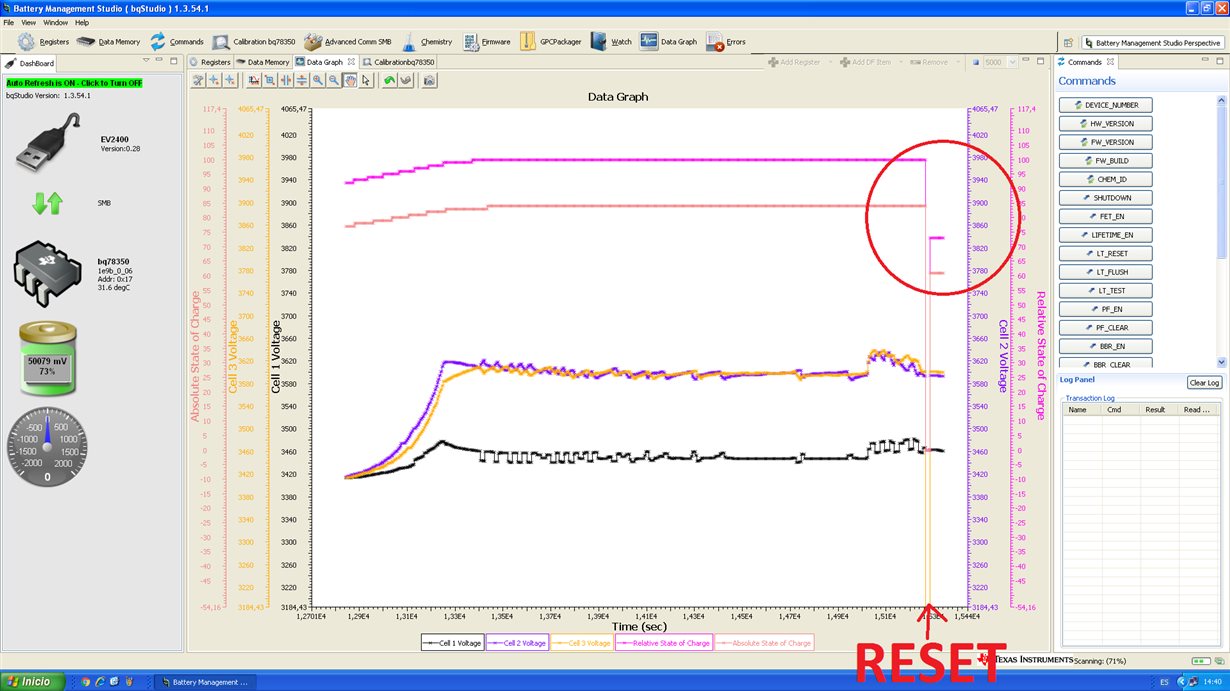Other Parts Discussed in Thread: BQ76940EVM, EV2400,
Hi there,
I'm working with the BQ76940EVM which has the gauge BQ78350DBT. I'm making some charge and discharge cycles and I don't understand the main behavior. I'm working with a 14S topologie.
Attach a picture where you can see a charge cycle (1A); and just after a discharge (-0.872A).
I have two questions:
- The "absolute state of charge" (green) and the "relative state of charge" (red) start to increase because the battery is charging at 1A, even you can see 4 cell voltage increasing as well. At 1950 seconds these signals stops to increase even with a 1A maintained!!!! Between 1950 to 2200 seconds the current charging with 1A and the signals are fixed. WHY?
- At 2200 seconds I start the discharge cycle with -0.872mA and both state of charge falls to 0 really quickly. WHY? I excepted a slowly decreasing values. Why falls to 0% so suddenly?
Probably I'm setting wrongly the registers.
Thanks



